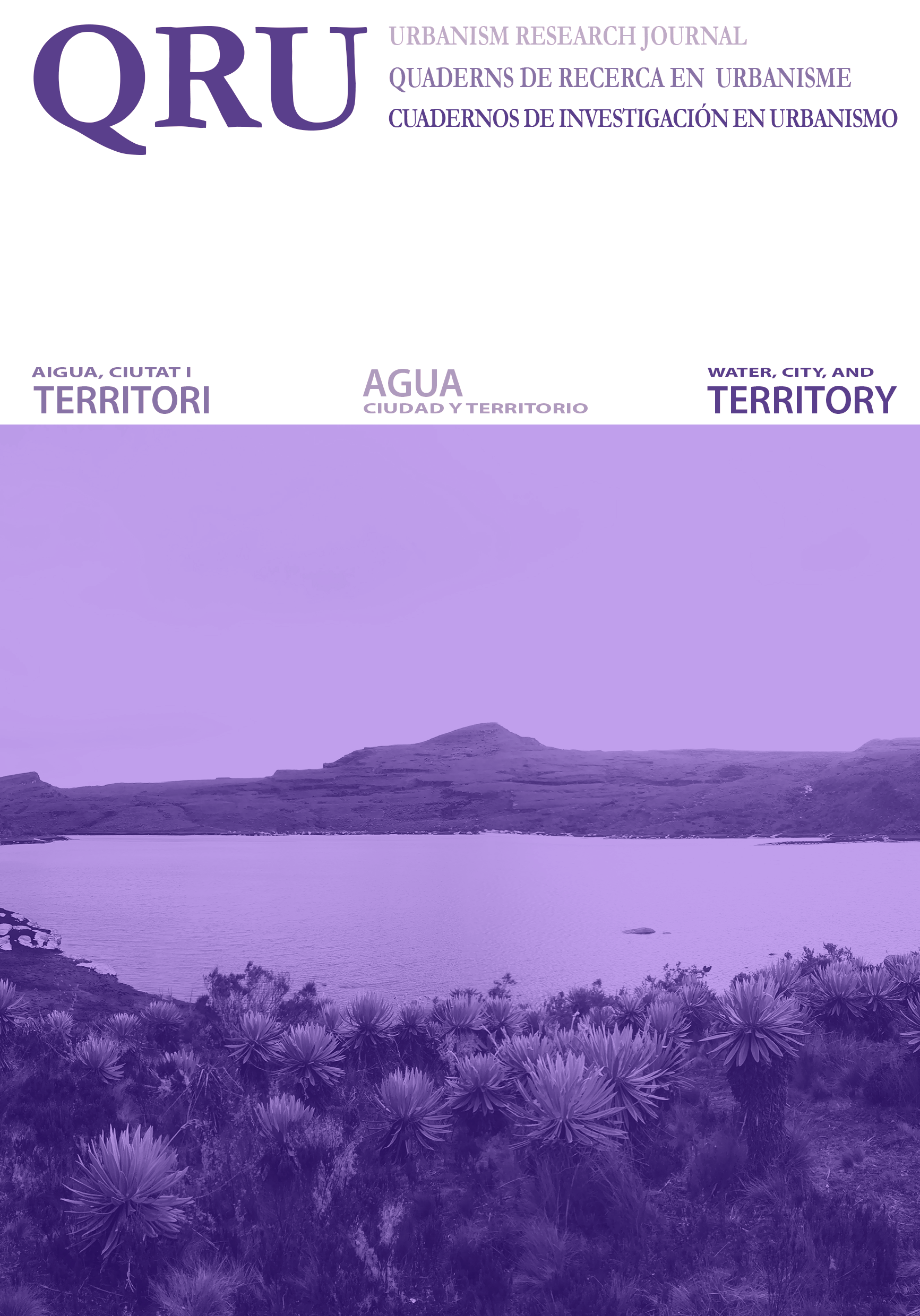Desafios líquidos
DOI:
https://doi.org/10.5821/qru.12149Abstract
El agua ha sido un factor clave en la localización de las ciudades a lo largo de la historia, ha influido en la disponibilidad de recursos y en la calidad de vida de las personas. Muchas ciudades se han establecido cerca de fuentes de agua, como ríos, lagos o manantiales, para asegurar el abastecimiento de agua para el consumo humano, el riego y otros usos. Además, los ríos han sido utilizados como rutas de transporte para la navegación y el comercio desde la antigüedad. Por ello, las ciudades que se encuentran cerca de ríos importantes o del mar, a menudo se han desarrollado como puertos comerciales y centros de transporte.
Pero el agua también ha influido en las pautas culturales de los habitantes de las ciudades, y ha sido un elemento clave en las prácticas religiosas y espirituales, las festividades y celebraciones, la arquitectura y el diseño urbano, y el patrimonio cultural. En muchas culturas, el agua tiene un valor sagrado y espiritual. Por otra parte, muchas culturas han desarrollado estilos arquitectónicos y un tipo de diseño urbano que refleja su relación con el agua. Esto ha convertido al agua en un elemento clave de su patrimonio cultural.
Downloads
Published
Issue
Section
License
Those authors who have publications with this journal, accept the following terms:
a. Authors will retain their copyright and guarantee the journal the right of first publication of their work, which will be simultaneously subject to the Creative Commons CC BY-NC-ND-4.0 recognition license that allows third parties to share the work provided that its author and its first publication are indicated in this journal, but they cannot be changed or used commercially.
b. Authors may adopt other non-exclusive license agreements for the distribution of the version of the published work (eg: deposit it in an institutional telematic archive or publish it in a monographic volume) provided that the initial publication in this journal is indicated.
c. Authors are allowed and recommended to disseminate their work through the Internet (e.g. in institutional telematic files or on their website) before and during the submission process, which can lead to interesting exchanges and increase citations. of the published work. (See The effect of open access).













